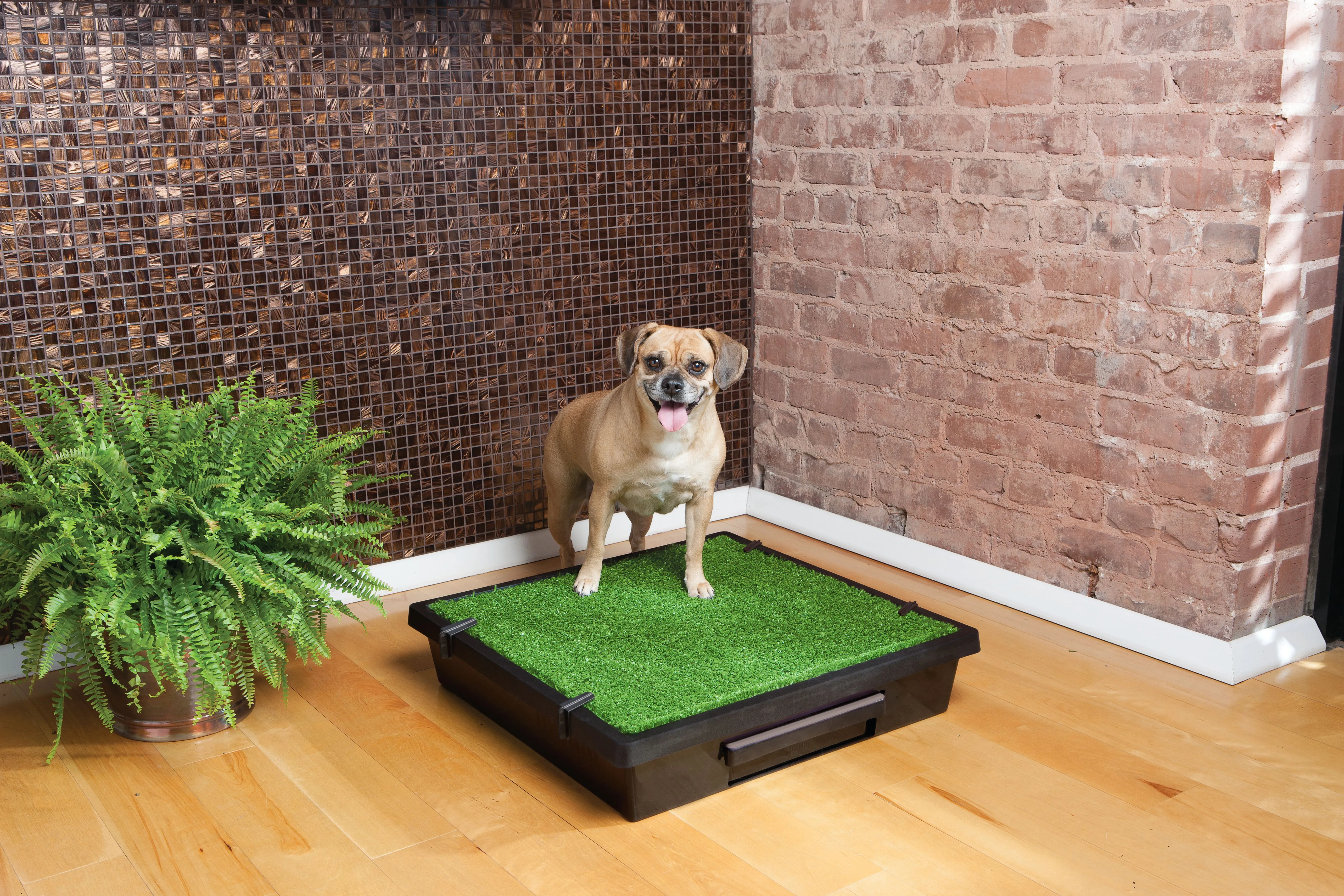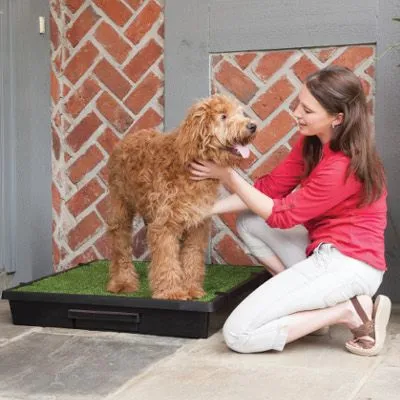Potty training is a top priority for new puppy owners, and a common question arises: Can A Dog Be Indoor And Outdoor Potty Trained simultaneously or sequentially? The good news is, absolutely! Whether you opt for an indoor, outdoor, or a flexible combination approach, the fundamental method remains consistent, and your dedicated involvement is paramount, especially during the initial stages. The core principles involve taking your dog to the designated spot when they need to go, rewarding them with praise and treats for eliminating in the correct location, and maintaining close supervision or confinement at all other times. This hybrid approach offers flexibility and convenience, making it a popular choice for many households, allowing your dog to master both environments successfully. For those focusing on outdoor training, understanding [getting your dog to pee outside](https://dogcarestory.com/getting-your-dog-to-pee-outside/) is a great starting point.
Understanding Your Potty Training Options
When it comes to teaching your puppy where to relieve themselves, you have several choices: exclusively indoors, exclusively outdoors, or a combination of both. A hybrid approach often provides the best of both worlds, offering solutions for varied lifestyles and challenging weather conditions. It acknowledges that sometimes, an indoor option is necessary, while still encouraging outdoor habits.
The Basics of Successful Potty Training
Regardless of the specific setup, effective potty training hinges on a few key elements. Consistency is vital; always take your puppy to their designated spot. Positive reinforcement, like praise and treats, immediately after they eliminate in the correct place, helps them associate the action with a reward. Finally, diligent supervision prevents accidents and allows you to anticipate their needs, guiding them to their potty area promptly.
Why Consider an Indoor Potty for Combined Training?
Indoor puppy potties come in various forms, including those with synthetic grass over a grate, litter-based systems, or even real sod/grass options. Synthetic grass potties are particularly beneficial for house training. They feel similar to real grass under your puppy’s paws, which can be crucial if your long-term goal is to transition them to outdoor pottying, as it helps them develop a preference for grassy surfaces different from indoor flooring like wood or carpet.
If you have a busy schedule and spend significant time away from home, an indoor potty provides a reliable place for your puppy to go when you can’t take them outside. This also eliminates the need for middle-of-the-night excursions, especially advantageous during bad weather or if you live in a high-rise apartment. Knowing your puppy has a specific, delineated toilet area indoors rather than eliminating throughout the house provides peace of mind. Many products are available to assist with [how to puppy pad train a puppy](https://dogcarestory.com/how-to-puppy-pad-train-a-puppy/), including attractant sprays, urine coagulants, deodorizing sprays, and replacement grass, all aiding in both training and cleanliness.
 A small puppy sitting on a synthetic grass indoor potty
A small puppy sitting on a synthetic grass indoor potty
Long-Term Advantages of a Hybrid Potty System
Beyond initial training, indoor potties offer several long-term benefits that complement outdoor routines. Their portability allows you to easily move them between different areas of your home, such as from a home office to a living room or bedroom. They are an excellent solution for dogs who may be injured and unable to walk long distances, or for smaller dogs with faster metabolisms who need to go more frequently. Owners living in high-rises, those with erratic schedules, or individuals with mobility or health issues also find them incredibly convenient. Indoor potties are typically easy to clean, and because urine drains or is absorbed, your dog is less likely to track waste onto your floors. This system means your dog doesn’t have to hold it as long as they would if their only toilet area were outside, improving their comfort and reducing potential accidents.
 A close-up view of a synthetic grass indoor puppy potty
A close-up view of a synthetic grass indoor puppy potty
Integrating Indoor and Outdoor Potty Training
Successfully potty training a dog for both indoor and outdoor use requires clear communication and consistency. The goal is for your dog to understand that both locations are acceptable for elimination, depending on the circumstances. When starting, regularly take your puppy to both the indoor potty and an outdoor spot on a schedule. Use consistent verbal cues for each location (e.g., “potty inside” and “potty outside”) and reward them generously for success in either area. This dual reinforcement helps them distinguish between the two and understand your expectations. Initially, you might focus more heavily on one method, gradually introducing the other as they gain confidence.
 A small puppy sitting obediently beside an indoor training pad or potty
A small puppy sitting obediently beside an indoor training pad or potty
Tips for a Smooth Transition and Dual Training Success
To ensure a seamless transition and lasting success with a hybrid potty training approach, consider these tips. Start by establishing a consistent routine for both indoor and outdoor breaks. You can try transferring a small amount of their urine or feces from one location to the other to help them associate the scent with a “potty spot.” Always accompany your puppy to both locations, providing supervision and immediate positive reinforcement. Avoid punishment for accidents, as this can make your dog fearful of eliminating in front of you, regardless of the location. Patience is crucial, especially if you’re working with a dog that seems to be [how to train a stubborn dog to pee outside](https://dogcarestory.com/how-to-train-a-stubborn-dog-to-pee-outside/). Remember, puppies develop muscle and mental control daily, requiring repetition to learn your desired elimination spots. When they use the potty, praise them as they are going and offer a treat immediately after they finish.
 A compact indoor dog potty system with synthetic grass
A compact indoor dog potty system with synthetic grass
Potty training your puppy takes time, patience, and unwavering consistency, but the effort will undoubtedly pay off for both you and your furry companion, providing them with the flexibility and comfort they need throughout their life.
Conclusion
The answer to “can a dog be indoor and outdoor potty trained” is a resounding yes, and it often provides the most flexible and practical solution for modern dog owners. By consistently applying core training principles – designated spots, positive reinforcement, and vigilant supervision – you can successfully teach your dog to use both indoor and outdoor facilities. This hybrid approach caters to various lifestyles, weather conditions, and specific dog needs, ensuring your canine companion can comfortably and reliably relieve themselves whether they are inside or out. Embrace patience and consistency, and you’ll foster a well-adjusted, happily house-trained dog.
